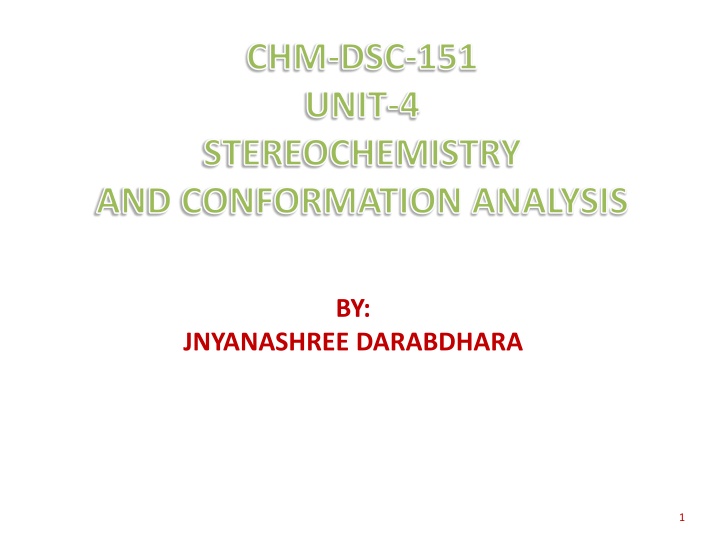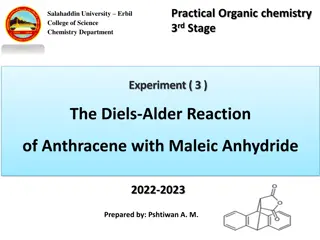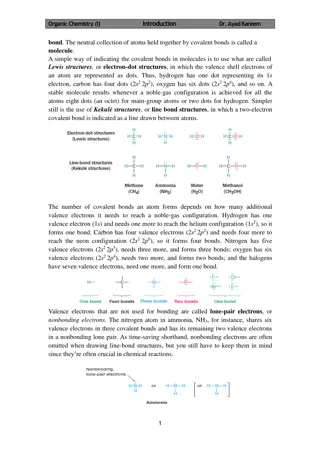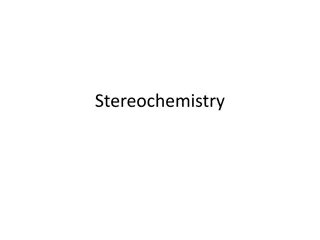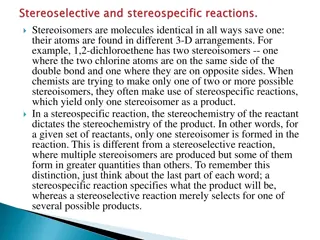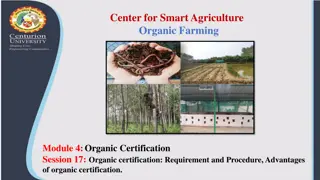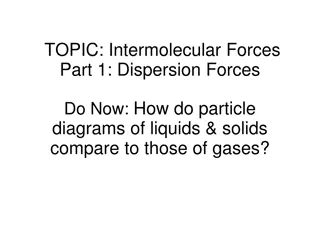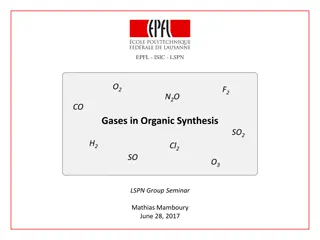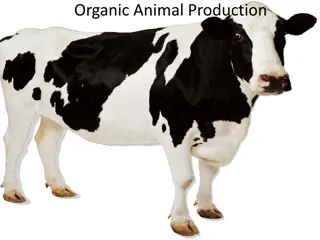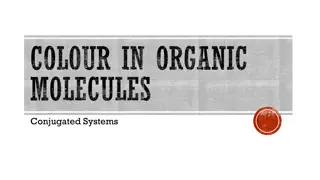Stereochemistry and Conformation Analysis in Organic Molecules
This material discusses stereochemistry concepts such as saw-horse projections, Newman and Fischer representations, and conformational analysis of organic molecules. It covers different types of configurations and rotations around carbon-carbon bonds, emphasizing the importance of understanding spatial arrangements in chemistry.
Download Presentation

Please find below an Image/Link to download the presentation.
The content on the website is provided AS IS for your information and personal use only. It may not be sold, licensed, or shared on other websites without obtaining consent from the author.If you encounter any issues during the download, it is possible that the publisher has removed the file from their server.
You are allowed to download the files provided on this website for personal or commercial use, subject to the condition that they are used lawfully. All files are the property of their respective owners.
The content on the website is provided AS IS for your information and personal use only. It may not be sold, licensed, or shared on other websites without obtaining consent from the author.
E N D
Presentation Transcript
CHM-DSC-151 UNIT-4 STEREOCHEMISTRY AND CONFORMATION ANALYSIS BY: JNYANASHREE DARABDHARA 1
Stereochemistry Projections of organic molecules. Saw-horse Newman Flying wedge Fischer Sawhorse Projections: There are two types of Y erect inverted Esclipsed Staggered 2
B,D is towards observer A,F away from observer C,E in plane B,F is towards the observer E,C is away from the observer A,D in plane B,D towards the observer F,C away from observer E,A in plane B,D towards the observer F,C away from the observer A,E in plane Conversion of one sawhorse to another The C-C bond is kept constant during the conversion We will fix one carbon and rotate the other carbon by 120 , 180 and 60 and observer the changes in the nature of Y s. 180 60 120 120 rotation no change in the nature of Y. 180 and 60 rotation the Y nature changes 3
Z axis Rotation around Z axis Application: A and C are syn. Syn occurs in eclipsed configuration A and C are anti. Anti occurs in staggered configuration NaI, Acetone trans 120 around C1, 60 around C2 4
Newman Representation U-Up, R-Right, B-Back, F-Front, L-left, D-Down Erect-inverted Inverted-erect Inverted-inverted Erect-erect The conversion of one newman to another is similar to the conversions in saw-horse 120 rotation around the front carbon 60 rotation around the back carbon A,Q are anti or A,Q are syn 5
Fischer Representation Vertical line means away from the observer Horizontal line means towards the observer In Fischer the maximum number of carbon atom should lie on line The most oxidized group should lie at the top and least oxidized group should be at the bottom Conversion of one fisher to another Fischer representation In fisher in plane rotation is allowed, out of plane rotation is restricted By keeping one bond constant we can rotate the other three groups by angles of n multiples of 120 . 6 180 around Z axis
Not allowed 180 around Y axis, out of plane rotation During the rotation the bond between the Carbon atoms was kept constant. 180 around Z axis, diagonal rotation Newman to sawhorse Saw-horse to newman: 7
Saw-horse to Fischer Press it from top Legs are converted to vertical and arms are converted to horizontal line Only erect-erect form will convert to fisher. 8
Fischer to saw-horse: 180 rotation at C2 Convert to erect-erect sawhorse and then do the elimination NaI, acetone Newmann to Fischer: This conversion is similar to sawhorse to newmann. Onle the erect-erect form will convert to fischer Fischer to Newman: 9
Application C2H5ONa Saw-horse to wedge Syn Anti 10
Wedge to saw-horse: Fischer to Flying wedge: Wavy line means the configuration is not defined A,R are syn A,D are anti 11
Asymmetric centre All the four groups attached to the asymmetric center should be different The hybridization of the asymmetric center (C atom) should be sp3 No asymmetric center * * R and S nomemclature in organic molecules: R mean Rectus S mean Sinister We will name R and S nomenclature based on the CIP rule. 12
CIP rule: The directly attached atom to the asymmetric center having high atomic number will get more priority. In case of isotopes, the isotope with high atomic mass will get more priority. Examples: Priority sequence: Br>Cl>F>H Priority sequence: F>T>D>H Important: 1. (C,C,C) , (6+6+6=18) Do not look in this way 2. (N,H,H), (14+1+1)=9) Instead look as (C,C,C)= C (N,H,H)=N As N has more atomic number then C so (N,H,H) has more priority over (C,C,C) 13
Examples: In case of double bond and triple bond they become duplicated and triplicated. By duplication Do similar with (O,O,H) R and S nomenclature in wedge systems: Assign the asymmetric center Put the CIP rule The fourth priority group should be always away from the observe. Then move 1-2-3, if the movement is clockwise then R, if anti-clockwise then S If the fourth priority group is towards the observer move 1-2-3, if movement is clockwise then S, if movement is anti-clock wise the R Clockwise movement Anticlockwise movement 14
If the fourth priority group is on plane, then do double interchange and determine the R and S. Examples: 15
THANK YOU 16
